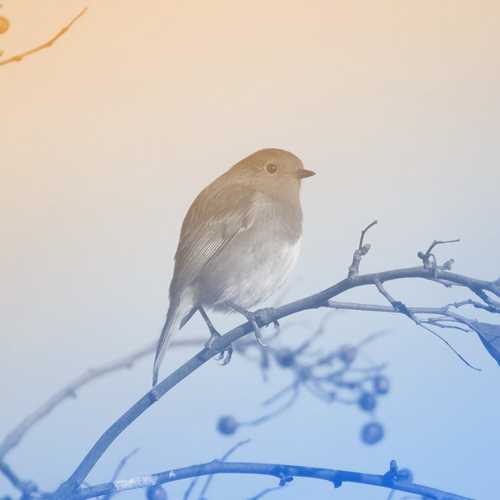
What is biophony? Definition and examples
what does biophony mean? the sounds generated by non-human organisms in a specific biome.
This term is derived from ‘the niche hypothesis’. Observations of non-industrial peoples (such as the Jivaro and other Amazon Basin tribes) revealed their ability to recognize sound made by animals in a way not possible for more ‘developed’ societies not living in such close harmony with natural environments. This ability to “not only […] distinguish one creature sound from another but […] recognize the subtle differences in sound between the various mini-habitats (as small as 20 sq. meters) in a forest” (Krause, 1993) prompted an acknowledgement that all zones of an intact habitat possess their own unique soundscape.
This in turn led to the idea that the vocalizations of animals in a habitat occupy particular channels within the “audio bio-spectrum”; that is, animals make sounds which occupy aural niches, rather than directly competing with other vocalizations being made on the same wavelength. So as to be heard, vocal organisms have “evolved to vocalize within a specific bandwidth—based on either frequency or time”, and “must find appropriate temporal or acoustic niches where their utterances are not buried by other signals” (Krause, 2015).
From field recordings, musician and soundscape ecologist Bernie Krause shows that certain animals even make vocalizations which occupy multiple acoustical niches at once: in Borneo, the voice of the Asian paradise flycatcher (Terpsiphone paradisi) “is made up of three harmonic components called formants”, which “fit uniquely and exactly into several niches where there is little or no vocal energy represented” (Krause, 1993).
The niche hypothesis further shows that when birds’ habitats are destroyed by deforestation, prompting shifts to theoretically similar environments nearby, they may not be able to make their calls heard. This gives some sense of the significance of biophony – and its disruption – to animal species, showing “a strong likelihood that survival might be impaired because territorial and/or gender related communications are masked” (Krause, 1993).
Ultimately, these observations led to Krause theorizing biophony (a term originally proposed by his colleague Ruth Happel) as one of three categories of sound which make up the soundscapes – acoustic environments – perceived by humans. The other types are anthropophony and geophony.
The way in which these sound categories interact is the subject of increasing study; for example, the masking of animal vocalizations by anthropophonic noise may cause changes to predator-prey relationships. More specifically, killer whales have been shown to alter their vocalizations due to noise from boats, while (among other studies) Nadia Pieretti at the University of Urbino, Italy has demonstrated that birds in urban environments also do the same in response to anthropophonic noise. By studying birdsong in central Italian forests, Pieretti has also shown that less structure is present when avian communities are exposed to, for example, noise from road-building.
Further evidence of anthropophonic influences on animal communication include:
- American robins (Turdus migratorius) in urban environments delaying their singing until nighttime, with great tits (Parus major) in similar situations increasing their pitch
- Song sparrows (Melospiza melodia) in environments with high ambient noise increasing the frequency of their lowest notes
- Free-ranging nightingales (Luscinia megarhynchos) in noisier environments increasing their volume, compared to those in quieter environments
- Great tits (Parus major) singing at higher pitches in conditions of urban noise.
More ambiguously, in a rare example of blurring between categories, the music and even language of certain indigenous peoples can be seen to derive from the soundscapes in which their cultures developed, aligning them as much with biophony as with conventional anthropophony. The polyphonic music of the Ba’Aka pygmies in Congo and the Central African Republic, for example, “uses the biophonies of the forest as a natural karaoke orchestra with which they perform” (Graugaard, 2013).
This level of connection to biophonies connects to Krause’s belief that they “contain the acoustic compass we need to guide us along the route of an ever-challenged planet” (Graugaard, 2013); paying attention to them may enable us to take stock of the fragile and uncertain times ahead.
References:
- ‘Anthropophony – the Noise Made by People’ https://citiesandmemory.com/anthropophony-the-noise-made-by-people/
- ‘Biophony’ by Bernie Krause (2017) https://www.anthropocenemagazine.org/2017/08/biophony/
- ‘The Niche Hypothesis: A Virtual Symphony of Animal Sounds, the Origins of Musical Expression and the Health of Habitats’ by Bernie Krause (1993) https://www.researchgate.net/publication/295609070_The_niche_hypothesis
- Soundscape Ecology: The Science of Sound in the Landscape by Bryan C. Pijanowski, Luis J. Villanueva-Rivera, Sarah L. Dumyahn, Almo Farina, Bernie L. Krause, Brian M. Napoletano, Stuart H. Gage, and Nadia Pieretti (2013) http://www.edc.uri.edu/nrs/classes/nrs534/nrs_534_readings/sound2.pdf
- The Eye of the Sandpiper: Stories from the Living World by Brandon Keim https://www.google.co.uk/books/edition/The_Eye_of_the_Sandpiper/ttZ9vgAACAAJ?hl=en
- ‘Repairing the Silent Spring: A Conversation with Bernie Krause’ by Jeppe Graugaard (2013) https://dark-mountain.net/repairing-the-silent-spring-a-conversation-with-bernie-krause/
Earth.fm is a completely free streaming service of 1000+ nature sounds from around the world, offering natural soundscapes and guided meditations for people who wish to listen to nature, relax, and become more connected. Launched in 2022, Earth.fm is a non-profit and a 1% for the Planet Environmental Partner.
Check out our recordings of nature ambience from sound recordists and artists spanning the globe, our thematic playlists of immersive soundscapes and our Wind Is the Original Radio podcast.
You can join the Earth.fm family by signing up for our newsletter of weekly inspiration for your precious ears, or become a member to enjoy the extra Earth.fm features and goodies and support us on our mission.
Subscription fees contribute to growing our library of authentic nature sounds, research into topics like noise pollution and the connection between nature and mental wellbeing, as well as funding grants that support emerging nature sound recordists from underprivileged communities.
